How and what can open the lock?
The lock is a great invention of the mankind, but only until this lock breaks and leaves you with a perplexed face in front of a closed door. We use locks only in case of necessity, that’s why we discover the breakage only when we urgently need to be on the other side of the door.
This material will tell you more about locks and give you a couple of methods for opening broken locks in an emergency.
Classification of locks
Let’s start with the types of locks – this determines the methods of their emergency opening.
By installation method
- Padlocks – The padlock looks like this
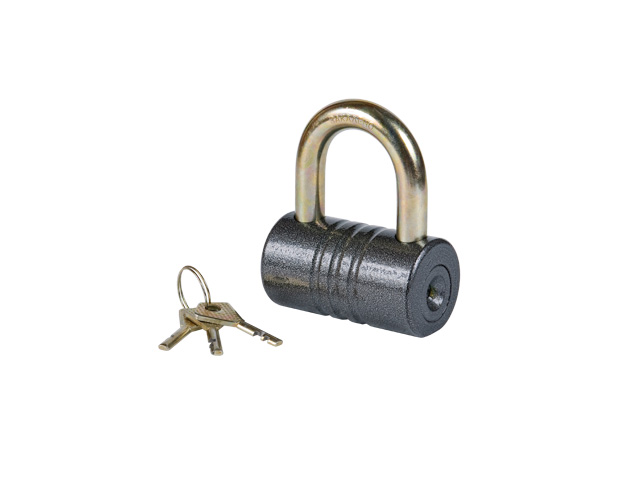
It consists of a shackle and a body. The shackle can be either a bent metal cylinder or a metal rope. The most common type of mechanisms are cylinder mechanisms, coded mechanisms are less common. The suvald and disk mechanisms are very rare.
Main vulnerability: mechanical hacking.
2. Surface locks
They are called add-on locks because they are “applied” to the door without violating its integrity. In 99% of cases the padlocks are used as a additional protection measure. The mechanism is almost always a cylinder or bolt lock.
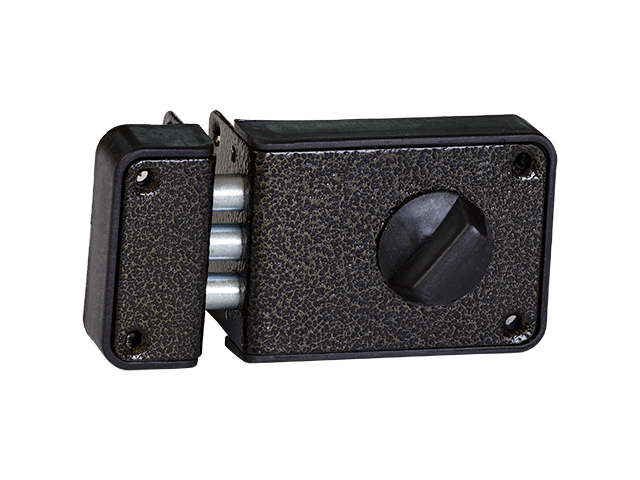
The main vulnerabilities: burglary with picklocks, weak attachment between the lock and the door.
3. Insertion locks
They look like this:
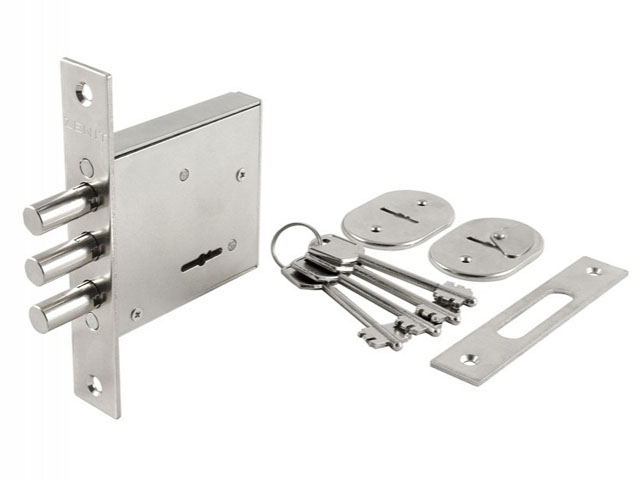
They are cut directly into the door, which is how they got their name. The most reliable door locks, because they have no simple vulnerabilities. Very often a tamper-proof lever mechanism is used, which makes it easier to “take out” the door than to pick the lock (for non-professional specialists).
Main vulnerabilities: door hinges, drilling for cheap mortise locks.
4. Electromechanical locks
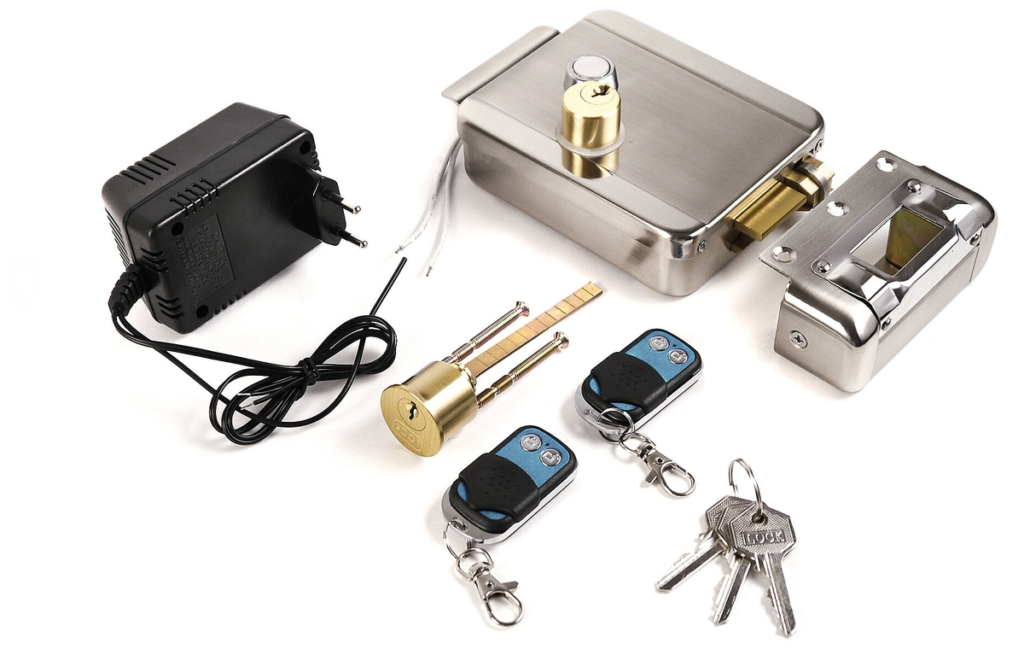
The inside looks something like this:
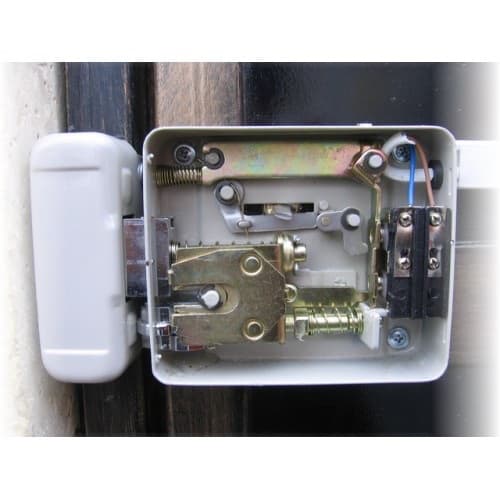
According to the principle of operation can be both fully electric (opened with a chip) and electromechanical (opened with a key). The “trick” of the lock is in the strength, mechanically breaking the lock is almost impossible without heavy tools. But there is a problem: the electromechanical lock depends on electricity, and electricity is needed specifically to unlock the lock. No voltage in the network – you can’t open the lock.
Main vulnerabilities: much depends on the method of attachment.
By locking mechanism
- Crossbar lock
From the inside it looks like this:
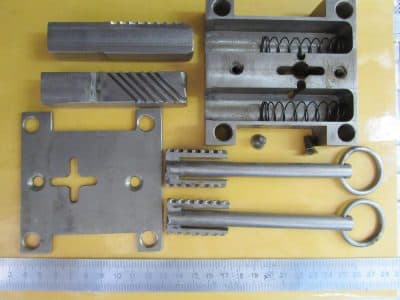
It has a very simple design – the spring pushes the deadbolt, which is the locking mechanism, to open the lock, you need to insert and turn the key with the protrusions, coinciding with the grooves on the deadbolt. The protection is achieved due to the different texture of the projections, different spacing between them and the different angle of the grooves. In general, this mechanism is one of the weakest, because with some dexterity it is possible to open it with two thin flat screwdrivers, alternately catching the grooves.
Main vulnerability: hacking with improvised tools.
2. Pin cylinder mechanism
The most common mechanism in the world. Simple enough for mass production, difficult enough for beginners to crack. Inside the lock there are 4-6 pins, supported by a spring. Each pin is divided into 2 parts, orange and yellow in the picture. When the key is not in the hole, the springs push the pins out completely and the lock is closed because the cylinder cannot turn. If the right key is inserted – all the pins will stand up so that the place of their separation coincides with the outer line of the cylinder, and that cylinder can be turned. If the wrong key is inserted, then at least 1 pin will be on the cylinder line not its split line and will mechanically block the cylinder from turning.
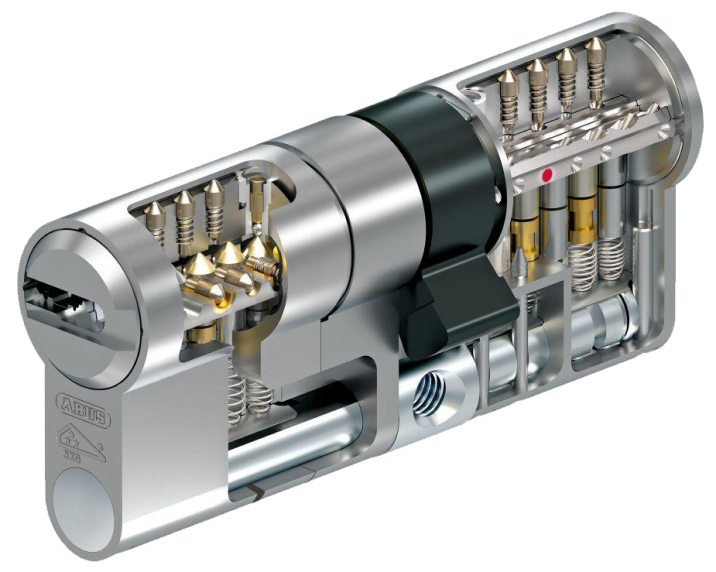
Main vulnerabilities: burglary with picklocks. The better the lock is made, the less is its twist, which can be used by an intruder. In the section “Lock picking by improvised means” we will tell you what this distortion is and how to pick such locks.
Tools for this type of locks can be found here https://keydecoder.eu/?product_cat=self-impression-cl
3. Disc cylinder mechanism
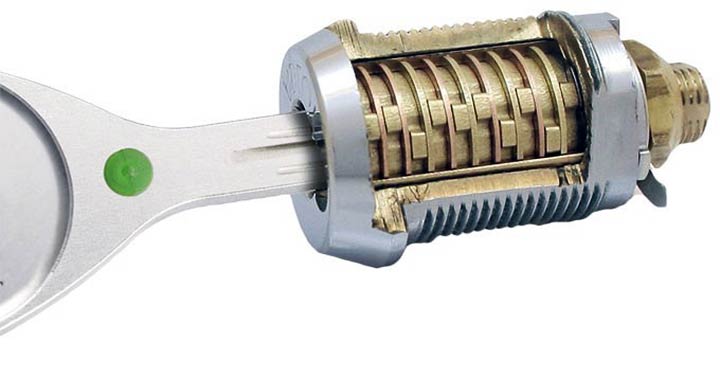
The principle of operation is similar to the pin mechanism, but instead of pins, discs are used. Each disc has its own hole, the lock is opened only when all the holes are lined up and form a locking groove. Such a lock is very difficult to pick with picks and very easy to drill out.
Main vulnerability: drilling out.
For example, here’s the picklock https://keydecoder.eu/?product=lockpick-manipulation
4. Lever locks
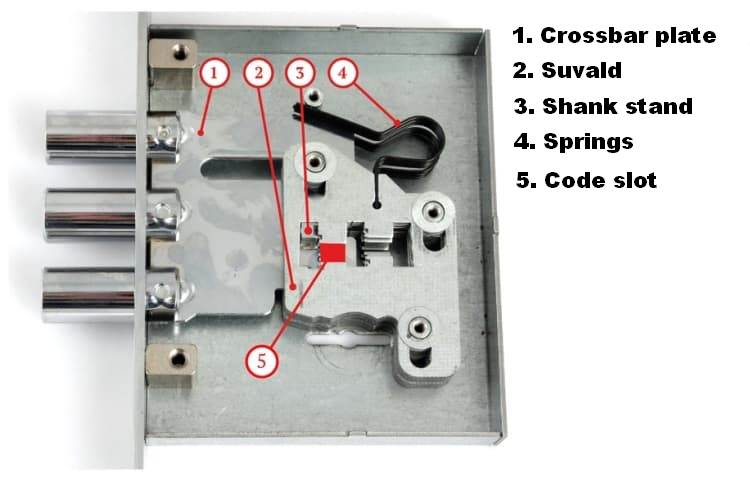
The most reliable locks. The lock is locked by a set of plates, only when all the plates (suvalds) are in the right position, only when they are in the right position will the main plate – the transom plate – completely move back and open the lock. Latch locks are a horrible puzzle for a burglar because:
- Plates are very difficult to pick with a picklock;
- The plates are even harder to hold with a lock pick;
- There’s no clear indication of the correct position of the plate;
- The parts are heavy and the spring is very strong, so special picks are needed;
- The lock consists of large iron parts, so it cannot be drilled out easily.
Tools for opening such locks can be found here https://keydecoder.eu/?product_cat=self-impression-ll
How to fix a stuck lock
Unlocking a jammed lock
It makes absolutely no sense to pick a jammed lock with a picklock. If the key fails, the picks definitely can not cope. The only breakage you can try to fix yourself is getting dirt in the moving parts of the lock. Pour WD-40 or something similar into it. After waiting 20 minutes – try to open the lock with the key. If it didn’t work – you will have to drill it out. Disk or pin lock can be drilled out by yourself (just take a drill with a diameter of the latch), but the swayback lock you yourself have not drill out – look for professionals.
Unlocking a lock jammed with a key
If the lock, in which the key was inserted, jammed, you need to pour WD-40, wait a while, pour oil into the hole (with a syringe with a needle). If after that the cylinder did not start to move – then the mechanism is finally broken, you need to saw down the key and drill out the entire casing.
What tools are needed to open and repair the lock
To open a workable lock you need picks (sometimes wrenches and screwdrivers are used), to open a jammed mortise lock you need a drill. Cheap Chinese locks can’t be repaired, because their case can’t be opened without permanent damage. If the lock can be dismantled you will need a set of tools, depending on the lock, usually you will need screwdrivers and polyhedrons.
Conclusion
Abstract:
According to the method of installation locks can be hinged, overhead, mortise and electromechanical (mainly allocated to a separate class because of magnetic doors).
The locking mechanism may be bolt, cylinder (pin or disc) and plunger.
The hardest lock to pick is the Lever lock.
If the door lock has failed (jammed), the only way to try to fix it at home without damaging the mechanism is WD-40.
If there is a piece of the key stuck in the lock, you need to pour oil into the hole and pull out the chip.
If you lost the key, but the lock is working, it can be hacked on their own, with homemade picks (only simple pin locks). But it will take you a lot of time, without experience, even with normal picks it is difficult to open the lock.
The easiest way is to call a master cracker. The master will be able to open a broken lock without damaging the door and repair it.
best lockpicking tools, Crossbar lock, Disc cylinder mechanism, Electromechanical locks, Insertion locks, Lever locks, lockpicking tools, locksmith, Locksmith gadgets for doors, Padlocks, Pin cylinder mechanism, Surface locks, Tools professional, Unlocking a jammed lock
novopet
Bravo, what phrase…, an excellent idea
tlovertonet
I got what you intend, appreciate it for posting.Woh I am thankful to find this website through google.